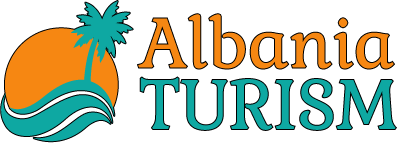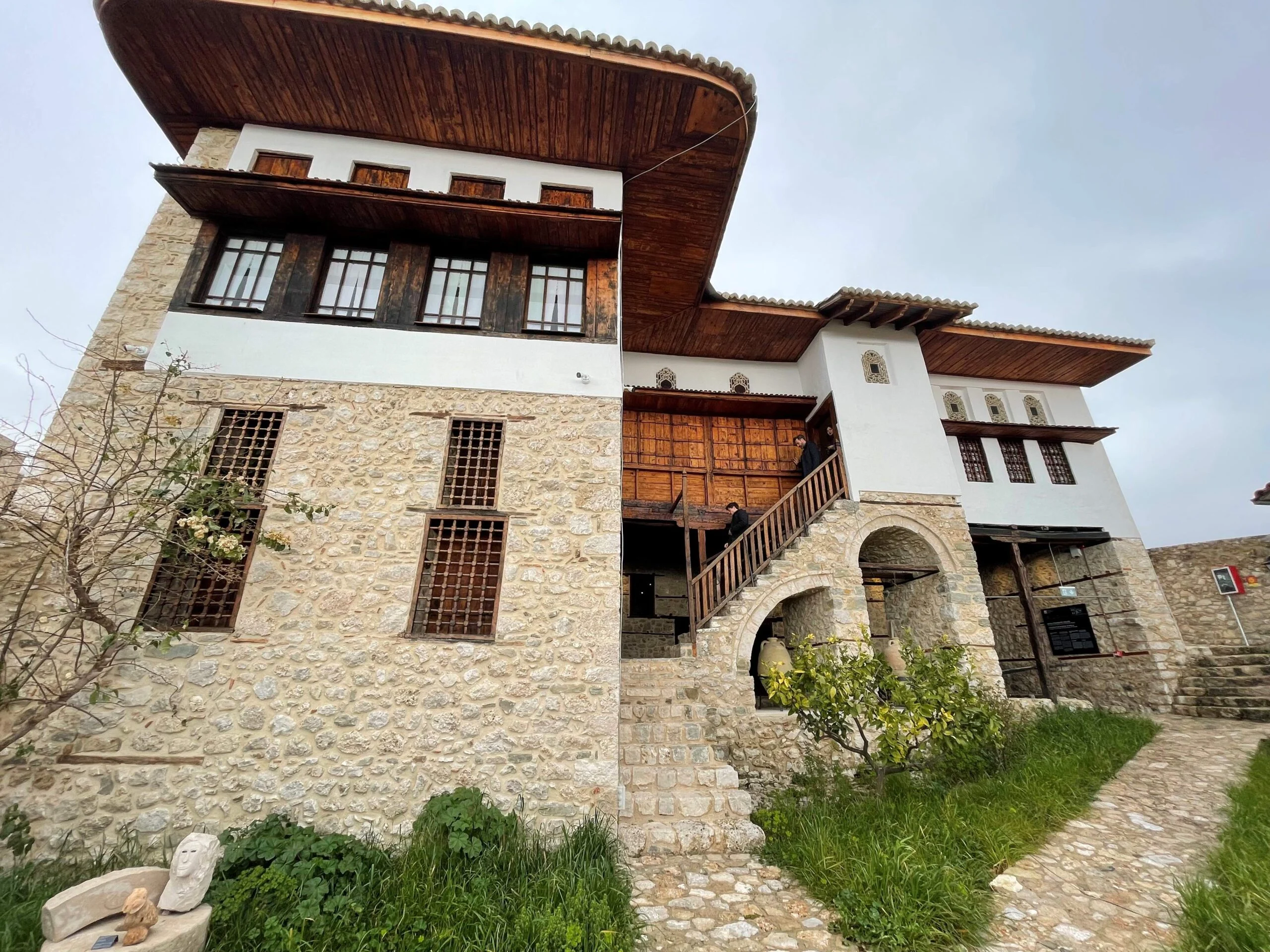
- Ethnographic Museum of Kruja offers a unique glimpse into Albanian traditional life and culture.
- Housed in an Ottoman-era residence, it reflects Albania’s architectural heritage and cultural identity.
- The museum’s collections include traditional clothing, household items, tools, and weapons—each narrating a part of Albania’s rich history.
- Located in the historic city of Kruja, the museum is intertwined with Albania’s history of resistance and resilience, especially under Skanderbeg.
- Beyond preservation, the museum actively promotes Albanian heritage through educational programs and community engagement.
Table of contents
- History and Background of the Ethnographic Museum of Kruja
- Origins and Establishment: Founded in 1976
- Location in Kruja and Historical Importance of Kruja City: A Stronghold of Resistance
- Architectural Style and Preservation of Traditional Albanian Culture
- Exhibits and Collections: A Glimpse into Albanian Culture
- Types of Artifacts Displayed: Traditional Clothing, Household Items, Tools, and Weapons
- Ethnographic Themes Covered: Albanian Customs, Daily Life, and Folklore
- Cultural Significance: Preserving Albanian Heritage
- Connection to the Local Community and Education: Engaging and Enriching
- Importance for Visitors: Understanding Albanian Culture
- Visitor Information: Planning Your Visit
- Practical Information: Opening Hours, Ticket Prices, Accessibility
- Tips for Visitors: Make the Most of Your Visit
- Nearby Attractions: Explore Kruja Castle and the Old Bazaar
- Why Visit the Ethnographic Museum of Kruja?
- Summarize the Value: Insights into Albanian History and Culture
- Encourage Cultural Appreciation: An Immersive Experience
- Conclusion: Explore, Learn, and Appreciate
The Ethnographic Museum of Kruja offers an enthralling journey into the heart of Albanian cultural traditions and history. Nestled in the historic city of Kruja, known as a symbol of resistance and resilience, the museum captures the essence of Albanian life across centuries. From traditional costumes to ancient tools and weapons, every artifact tells a story. Step into this living museum and explore the vibrant heritage that has shaped Albania’s identity.
History and Background of the Ethnographic Museum of Kruja
Origins and Establishment: Founded in 1976
The Ethnographic Museum of Kruja was established in 1976, symbolizing a renewed effort to preserve Albanian cultural identity during a period of transition. Housed inside a beautifully restored Ottoman-era house, once belonging to the noble Toptani family, the museum embodies architectural elegance and historical richness. This setting provides visitors with an authentic glimpse into traditional Albanian domestic life embedded within a centuries-old structure. Preserving this architecture underscores Albania’s dedication to safeguarding its cultural legacy amidst modern changes.
Location in Kruja and Historical Importance of Kruja City: A Stronghold of Resistance
Kruja’s strategic position on a mountain ridge made it a formidable fortress against Ottoman invasions. Known as Kruja was the epicenter of Albanian resistance under the leadership of Gjergj Kastrioti Skanderbeg, who heroically defended the nation during the 15th century. The city’s cobbled streets, ancient walls, and artifacts reflect its enduring role as a symbol of Albanian resilience and national pride. Visiting Kruja means immersing yourself in the history of brave resistance and cultural pride that continues to inspire Albanians today.
Architectural Style and Preservation of Traditional Albanian Culture
The museum’s house, a beautifully preserved Ottoman-style residence, features stone walls, wooden balconies with intricate carvings, and a cozy central courtyard. These architectural elements serve as tangible artifacts of Albanian heritage, reflecting the traditional way of life. Inside, the rooms are arranged to mimic an Albanian household, with exhibits on daily life, family customs, and social structure. Preserving the house’s architecture is an act of cultural memory, creating an authentic environment that transports visitors back in time, emphasizing Albania’s commitment to conservation and cultural pride.
Exhibits and Collections: A Glimpse into Albanian Culture
Types of Artifacts Displayed: Traditional Clothing, Household Items, Tools, and Weapons
The collections vividly depict Albanian life through:
- Traditional Clothing: Features regional costumes, embroidered dresses, and accessories, showcasing unique styles and craftsmanship. Examples include woolen and silk garments adorned with embroidery, reflecting cultural identity.
- Household Items: Kitchenware, furniture, utensils, and textiles reveal domestic life and regional traditions. Items crafted from wood, copper, and ceramics illustrate resourcefulness and regional distinctions.
- Tools and Weapons: Implements used in agriculture, craftsmanship, and defense—including swords, knives, and firearms—highlighting Albania’s historical struggles and craftsmanship.
Ethnographic Themes Covered: Albanian Customs, Daily Life, and Folklore
The museum explores core aspects such as:
- Traditional Customs: Weddings, funerals, hospitality, and rites that define Albanian social fabric. Exhibits illustrate the significance of guest-host relationships and ceremonial practices.
- Daily Life & Folklore: Farming, herding, music, and craft traditions. The rich folklore exhibits include costumes, musical instruments, and narrative traditions, offering a vibrant picture of Albanian cultural life.
Unique or Rare Items: Uncovering Historical Significance
The museum houses rare artifacts such as ancient jewelry, manuscripts, and handcrafted textiles that carry significant historical importance. These items provide insights into Albania’s ancient past and cultural exchanges over centuries, helping visitors appreciate the depth of Albanian heritage.
Cultural Significance: Preserving Albanian Heritage
Preserving and Promoting Albanian Heritage: Education and Beyond
The museum serves as a vital cultural hub—hosting workshops, educational tours, and cultural events aimed at fostering pride and understanding of Albanian traditions. It acts as a guardian for cultural memory, ensuring ancient customs and crafts are passed to future generations.
Connection to the Local Community and Education: Engaging and Enriching
The museum actively collaborates with local schools, universities, and cultural groups. Through guided tours, hands-on workshops, and community events, it creates a vibrant relationship that sustains and promotes Albanian cultural identity within Kruja and beyond.
Importance for Visitors: Understanding Albanian Culture
For travelers, the museum offers an essential understanding of Albanian traditions, complementing visits to nearby landmarks like Kruja Castle. It provides context to the historical struggles, art, and social customs that shape Albania’s national identity.
Visitor Information: Planning Your Visit
Practical Information: Opening Hours, Ticket Prices, Accessibility
Check the official website or contact local tourism offices for the latest updates on opening hours and ticket prices. The museum is wheelchair accessible, and guided tours are available upon request. Opening hours typically are from morning till late afternoon, but verify before your trip.
Tips for Visitors: Make the Most of Your Visit
Allocate at least 2-3 hours to explore thoroughly. Hiring a local guide can enrich your experience with detailed stories behind each artifact. Wear comfortable shoes, as the museum space and surrounding streets involve some walking. Don’t forget your camera and curiosity!
Nearby Attractions: Explore Kruja Castle and the Old Bazaar
Combine your visit to the museum with a tour of Kruja Castle and the vibrant Old Bazaar. The castle offers panoramic views and historical insights, while the bazaar provides local crafts, souvenirs, and authentic Albanian ambiance.
Why Visit the Ethnographic Museum of Kruja?
Summarize the Value: Insights into Albanian History and Culture
This museum is a treasure trove for anyone keen on understanding Albania beyond its landscapes. It captures the essence of Albanian resilience, traditions, and artistry—making it an indispensable part of any cultural exploration in the region.
Encourage Cultural Appreciation: An Immersive Experience
Visiting the Ethnographic Museum immerses you in authentic Albanian life, enhancing appreciation and respect for its customs and arts. It invites reflection on the importance of cultural preservation and the role of museums as custodians of heritage.
Conclusion: Explore, Learn, and Appreciate
The Ethnographic Museum of Kruja exemplifies Albania’s dedication to safeguarding its centuries-old traditions. It’s more than just a building—it’s a portal to the soul of Albanian culture. I encourage you to visit, explore, and immerse yourself in this vibrant cultural tapestry to truly appreciate the depth and resilience of Albania’s heritage.


0 Comment